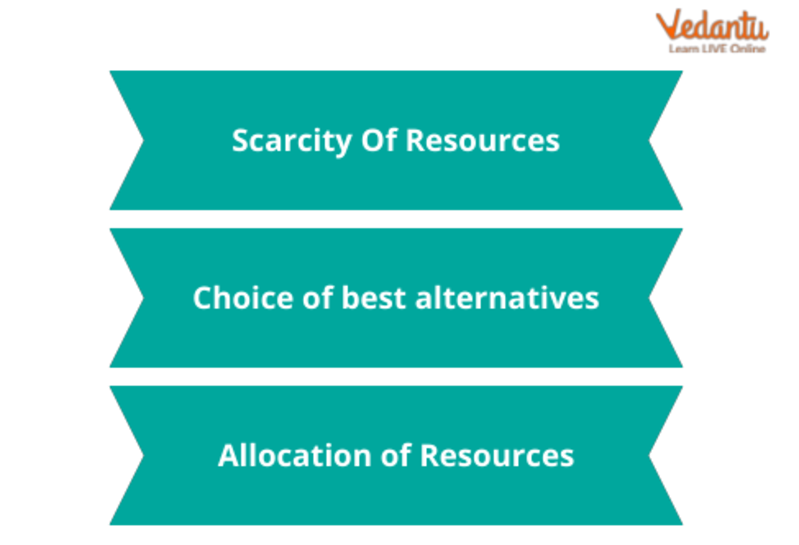




What is Economics?
Economics is all about making decisions in the face of scarcity, and it examines human behaviour as a relationship between resources and ends, human wants. Economics studies how societies use limited resources with alternative uses to produce goods and services and distribute them to different groups of people. It can be divided into two types:

Economics
Normative economics – It deals with what should be done or how economic problems should be solved.
Positive Economics – It deals with what are the economic problems and how they are solved.
An Overview of Evolutionary Economics
Evolutionary economics assumes that economic processes evolve and are determined by individuals and societies. It eschews the rational choice theory of traditional economics and argues that psychological factors are an important driving force in economics.
Many political thinkers tried explaining the origin of the state in different ways. The evolution theory of the origin of the state can be described as the product of states' growth. This is a slow and gentle evolution over a long period that eventually forms the complex structure of the modern state. There are five theories for explaining the origin of the state, but it fails to provide an adequate explanation.
Evolutionary economists believe economies are dynamic, ever-changing, and chaotic rather than tending toward equilibrium. Traditional economic theory generally views people and government agencies as perfectly rational actors. Evolutionary economics differs by avoiding rational choice theory and identifying complex psychological factors as the primary driving force in economics. One of the biggest lessons most evolutionary economists agree on is that failure is a good thing and is just as important as success. The theory is that failure paves the way for economic prosperity by increasing efficiency and developing better products and services. It also tells us how society's needs evolve.
The Evolution of Microeconomics
Now, let's discuss the evolution of microeconomics in detail.
Microeconomics is a branch of economics that deals with the behaviour of individuals and firms in making decisions about allocating scarce resources and how those individuals and firms behave. One of the goals of microeconomics is to analyse the market mechanisms that set relative prices between goods and services and allocate limited resources to other uses.
It reveals the conditions under which free markets lead to desirable allocations. It also analyses market failures when the market fails to produce efficient results. Microeconomics is in contrast to macroeconomics which encompasses economic activity as a whole and deals with problems of growth, inflation, unemployment, and national policies related to these problems.
Microeconomics also examines the impact of economic policies, such as changes in the levels of taxation. Much of the modern microeconomics theory has been built on micro foundations, especially after Lucas's critique. It is based on a basic assumption about behaviour at the micro level.
Case Study
According to you, is economics normative or positive economics? Explain to support your answer.
Ans: Positive economics is concerned with developing and validating positive statements about the world that are objective and verifiable. Normative economics is deeply concerned with value judgments and theoretical scenarios. We can say that economics is positive and normative economics. Positive economics influences normative economics by ranking economic policies or outcomes based on their acceptability. Positive economics is defined as economics, whereas normative economics focuses on what should be. Positive economics is used as a practical tool to achieve prescriptive goals. In other words, positive economics presents economic problems explicitly, while prescriptive economics offers value-based solutions to problems.
Summary
The evolution of economics is one of the most important concepts of economics for Class 11 students. Evolutionary economics studies how human behaviours such as fairness and a sense of justice extend into economics and analyses economic behaviour in terms of evolution and evolutionary human instincts such as predation, imitation, and curiosity and try to explain progress. The survival of the best-fit model is prevalent in the free market. Consumers have many choices, but few companies can fully meet their needs, everything is in constant flux, and many competitors are being wiped out.






FAQs on Evolutionary Economics Overview
1. State the importance of evolutionary economics.
The Importance of evolutionary economics is discussed below.
Business failures are just as important as successes. Willingness to tolerate failure is essential for dynamic efficiency and new product/service development.
National economic development is based on diversity. Business language is about competitive markets and conditions that foster innovation, imagination, and creativity. Governments can therefore educate, train, and support entrepreneurs.
A stable legal and political system is important to enabling creativity.
Competitive pricing is just one aspect of his competition. It is more important to provide more attractive products and services. Companies that can provide desirable new strains will do well.
2. Explain the history of Evolutionary Economics.
The history of evolutionary economics is discussed below:
American economist Veblen coined the term evolutionary economics, believing that psychological factors could explain economic behaviour better than traditional rational choice theory. Veblen used the example of social hierarchy and status to illustrate his argument, noting that the demand for some commodities tends. He drew on many fields of study, such as sociology, anthropology, and psychology.
Schumpeter also played a key role in evolutionary economics development. His model of creative destruction extended Veblen's earlier observations by explaining the essential nature of capitalism as a constant pursuit of progress. He argues that human entrepreneurship is the main driver of economic development.
3. Explain the objectives of Microeconomics.
Microeconomics has two major objectives which are important to understand. One in the manufacturing industry and the other in the market. Manufacturing uses microeconomics to determine the economics of scale in the manufacturing process. It also includes measuring and determining product demand and the most efficient manufacturing processes and schedules. In markets, microeconomics creates demand and supply curves that help determine an item's selling price. A key component of microeconomics is accurately forecasting demand for a particular product.





















